Nautical Interior Design: Celebrating the Visual Impact of the Ocean
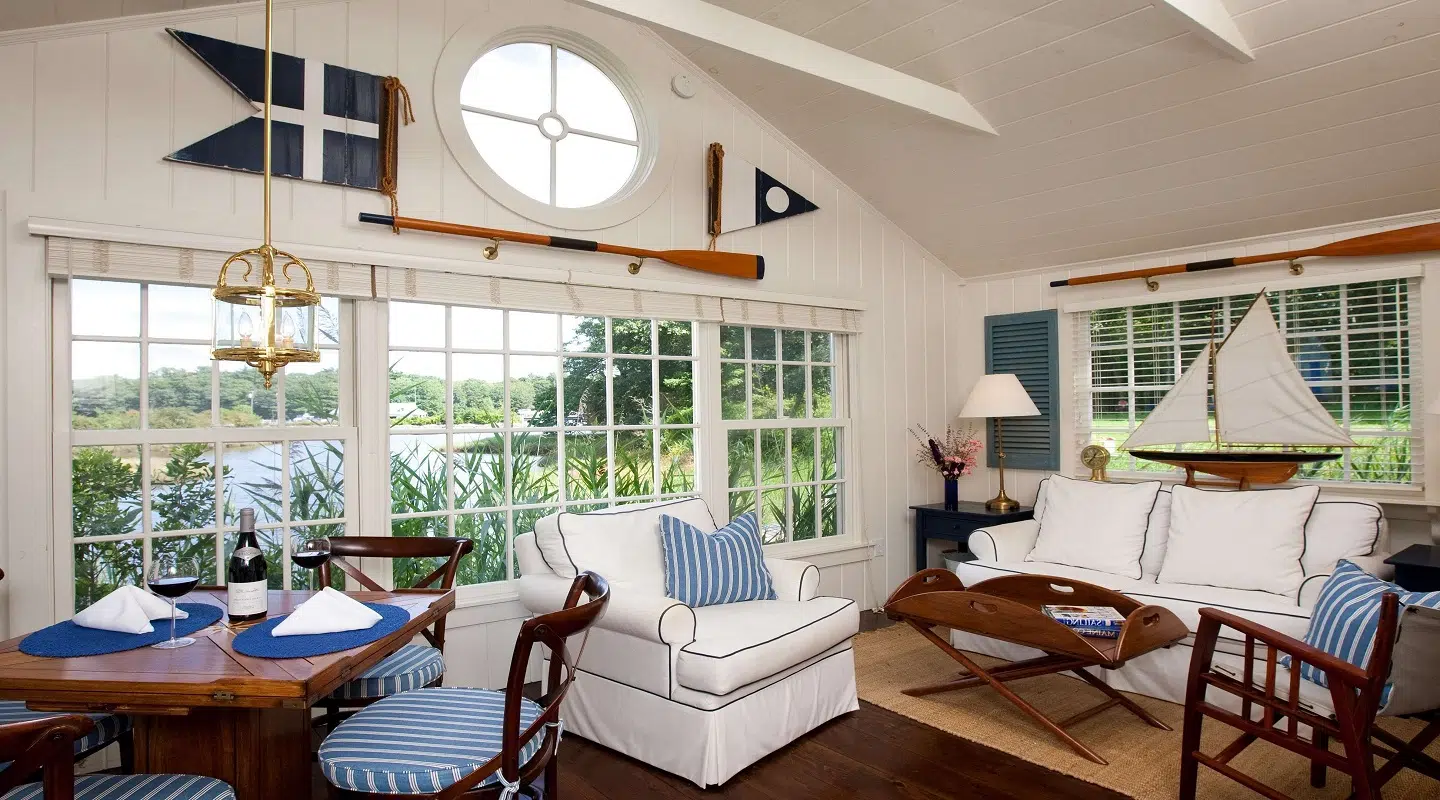
Nautical interior design is a distinct interior design style that captivates the vital aspects of maritime existence. It blends the marine world’s concepts of discovery, voyage, and repose within indoor areas to create a perpetually appealing and refreshing aesthetic. This article will delve into the backstory, pivotal components, and upcoming trends in nautical interior design.
Tracing the Path of Nautical Interior Design
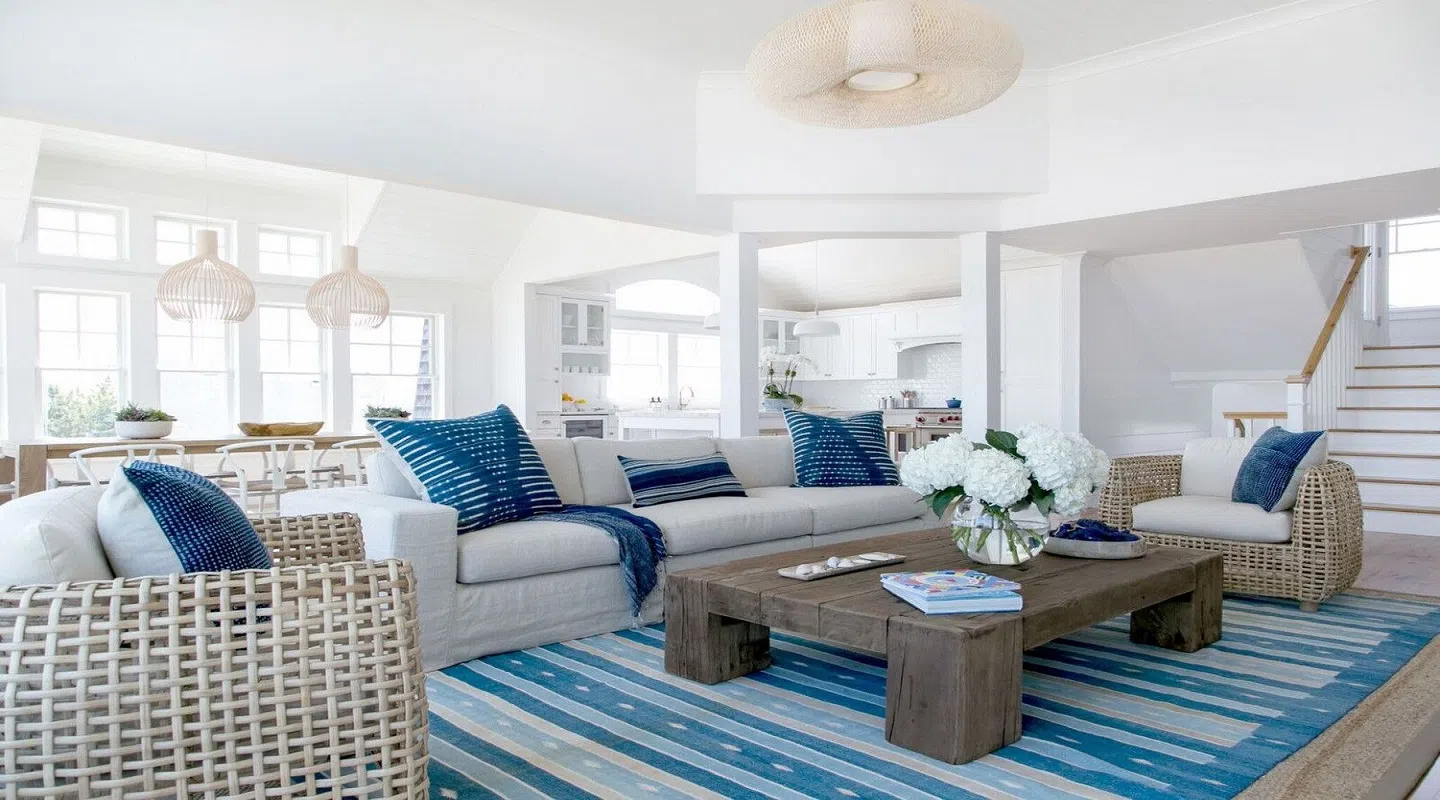
The roots of nautical or sea-themed design can be traced back to communities reliant on the sea and coastal locales. Influenced by sailors’ uncomplicated lifestyle and the ocean’s inherent allure, this design genre is deeply embedded in our history.
The Dawn of Nautical Design
Nautical design was popular in the 16th and 17th centuries, known as the golden era of maritime exploration. The interiors of vessels, taverns, and harbor residences bore the imprint of the marine theme, with minute details such as maps, ship wheels, and navigational devices. By the 18th and 19th centuries, the design aesthetic had crept into colonial homes, symbolizing the tie between naval might and colonial expansion.
The 20th Century and the Present Day
The 20th Century saw the notion of vacationing and relaxation becoming intertwined with nautical design. Seafront homes and vacation resorts adopted the aesthetic, ushering in a fresh, airy, and sunlight-infused atmosphere. Currently, nautical design has broken free from geographical constraints and is being welcomed into urban residences and inland properties for its calm and restful vibe.
Pillars of Nautical Interior Design

The true essence of nautical design lies in its fundamental components that mirror the peacefulness of the sea and the thrill of exploration. Let’s explore these components and how they unite to design a nautical-inspired setting.
The Color Spectrum
The hues of the ocean and the sky predominantly inspire the color scheme of the nautical design. It encompasses shades of blue, white, sandy beige, and occasional streaks of red or coral. These colors create a tranquil and soothing environment, evoking the seaside and ocean vibe.
Materials and Texture
Nautical indoor spaces use natural timber, rope, jute, and seashells, reflecting the sailor’s lifestyle. Textures also hold a crucial role in this design trend, lending authenticity with sandy grains, seashells’ rough exterior, and sea cotton fabrics’ gentleness.
Furniture and Decorations
In terms of furniture, nautical design veers towards comfort and utility. Furnishing items are generally robust and crafted from wood, sometimes aged or coated in muted colors. Decorations include maritime symbols and objects such as anchors, ship wheels, compasses, sea creatures, and maps.
Emerging Trends and the Future of Nautical Interior Design

Nautical interior design is a vibrant domain, persistently evolving while maintaining its fundamental marine elements.
Eco-friendly Nautical Design
In the wake of increasing awareness about environmental concerns, sustainable nautical design has gained momentum. This strategy involves using reclaimed timber, organic fibers, and the creative repurposing of old maritime objects, ensuring the design’s beauty is in sync with green practices.
The Impact of Digital Technology
Digital technology has begun to leave its imprint on nautical design. Designers utilize augmented reality (AR) and virtual reality (VR) to design immersive marine environments and aid clients in visualizing their spaces. Furthermore, the incorporation of smart technology and automation has started subtly influencing this style, mirroring the sophistication of modern maritime vessels.
Nautical Interior Design: Exploring its Various Adaptations
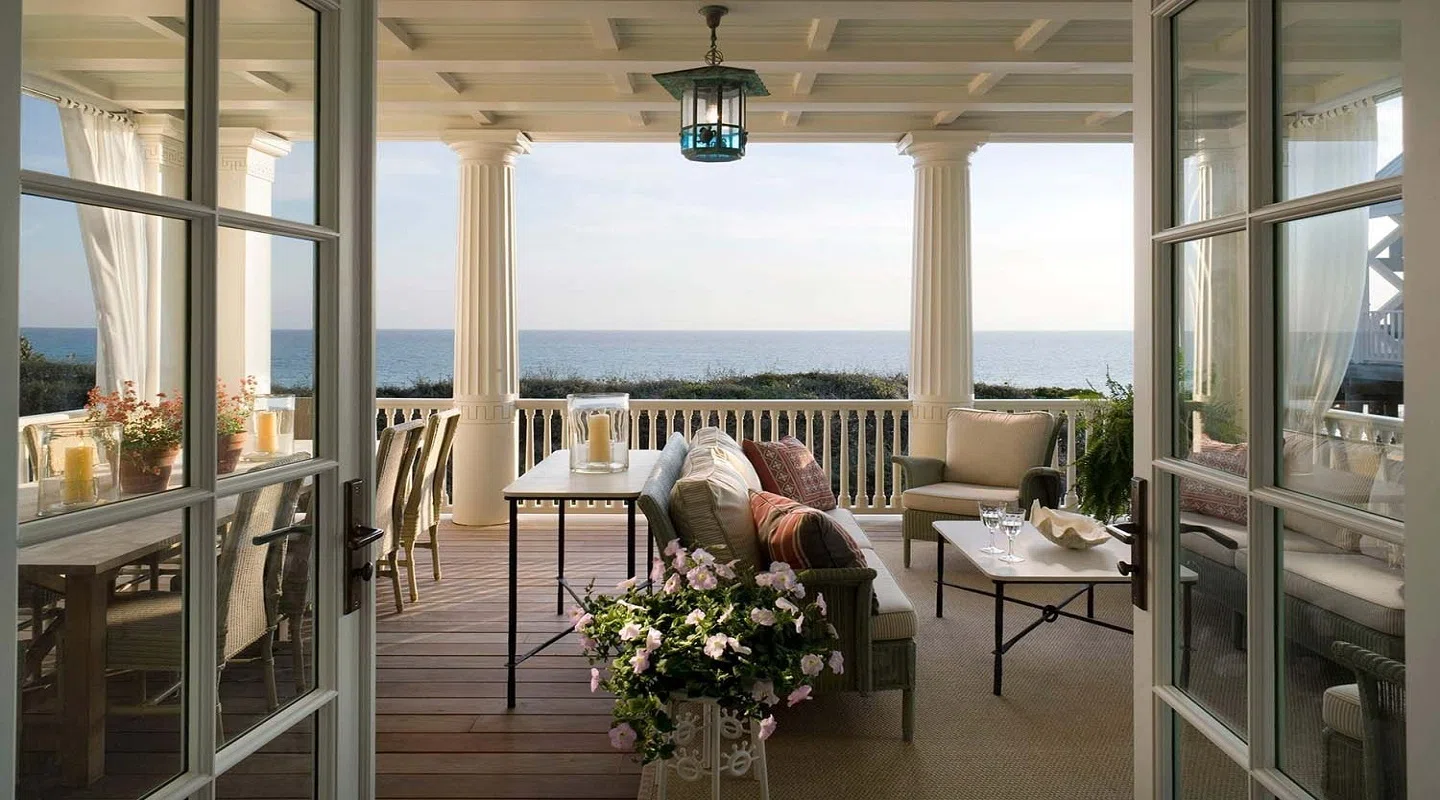
Nautical interior design doesn’t adhere to a single standardized principle. Here are some notable variants, each presenting unique renditions of the sea-inspired aesthetics.
Seaside Cottage Design
This approach borrows from the idyllic beach cottages, known for their relaxed and snug ambiance. The color scheme is lighter, incorporating pastel hues and conventional maritime blues and whites. The décor commonly includes beach-oriented items like sea glass, driftwood, and coastal vegetation.
Mediterranean Seafaring Design
This style is inspired by the crystal-clear Mediterranean seas and the lively cultures it touches, introducing more warmth and vibrant colors. Terracotta, olive green, and lavender accents often punctuate the standard nautical palette, while patterned tiles, wrought iron, and textured plaster add a rustic appeal.
Tropical Maritime Design
This variant blends nautical elements with a tropical zest, suitable for residences in hotter climates or those smitten by tropical vibes. Bright, striking colors, exotic flora, and materials such as bamboo and rattan are woven into the design, evoking a lively, island-like environment.
Significance of Light in Nautical Interior Design

Natural light is integral to nautical interior design, symbolizing the sun’s shimmer on the sea surface.
Optimizing Natural Light
Nautical design often includes large windows, skylights, or French doors to recreate this rejuvenating ambiance indoors. Window sheer or lightly hued treatments are common to allow maximum light penetration.
Artificial Illumination
When natural light is sparse, artificial lighting becomes vital. Coastal-themed light fixtures, soft white light bulbs, and strategically positioned lamps can replicate the warmth and brightness of natural sunlight.
Role of Textiles in Nautical Interior Design
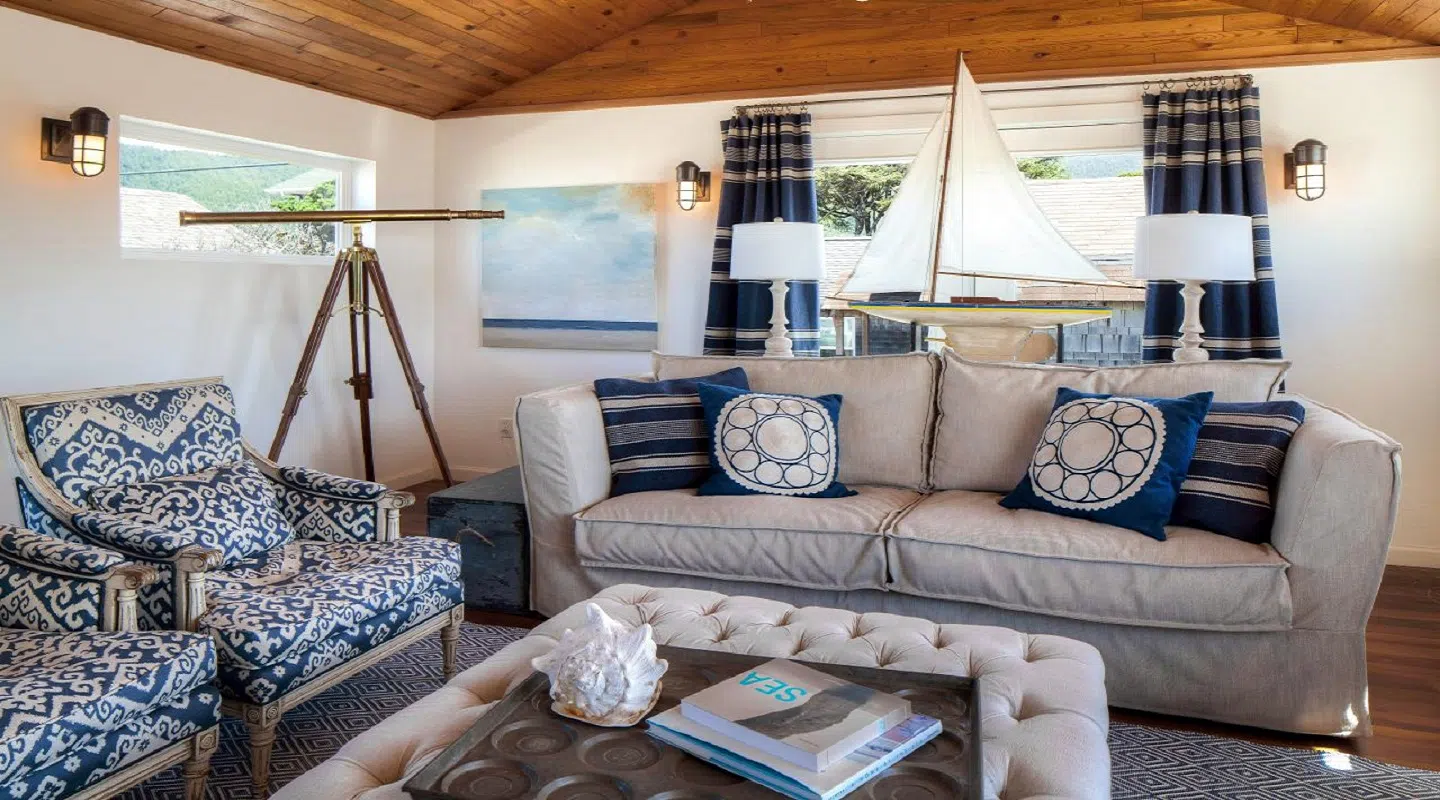
Textiles significantly contribute to the ambiance of a nautical space. This section explores their application in this specific design approach.
Choice of Fabrics
Natural, breathable fabrics like cotton, linen, and canvas are preferred. These materials resemble sailcloth and promote comfort and airiness in a residential setting. Stripes, maritime symbols, and coastal fauna and flora are common patterns.
Rugs and Carpets
Rugs and carpets frequently display nautical colors and patterns. They offer comfort and warmth while emphasizing the sea-inspired theme. Material-wise, jute or sisal rugs are favored for their coarse, organic textures, evoking ship ropes.
The Positive Influence of Nautical Design on Well-being
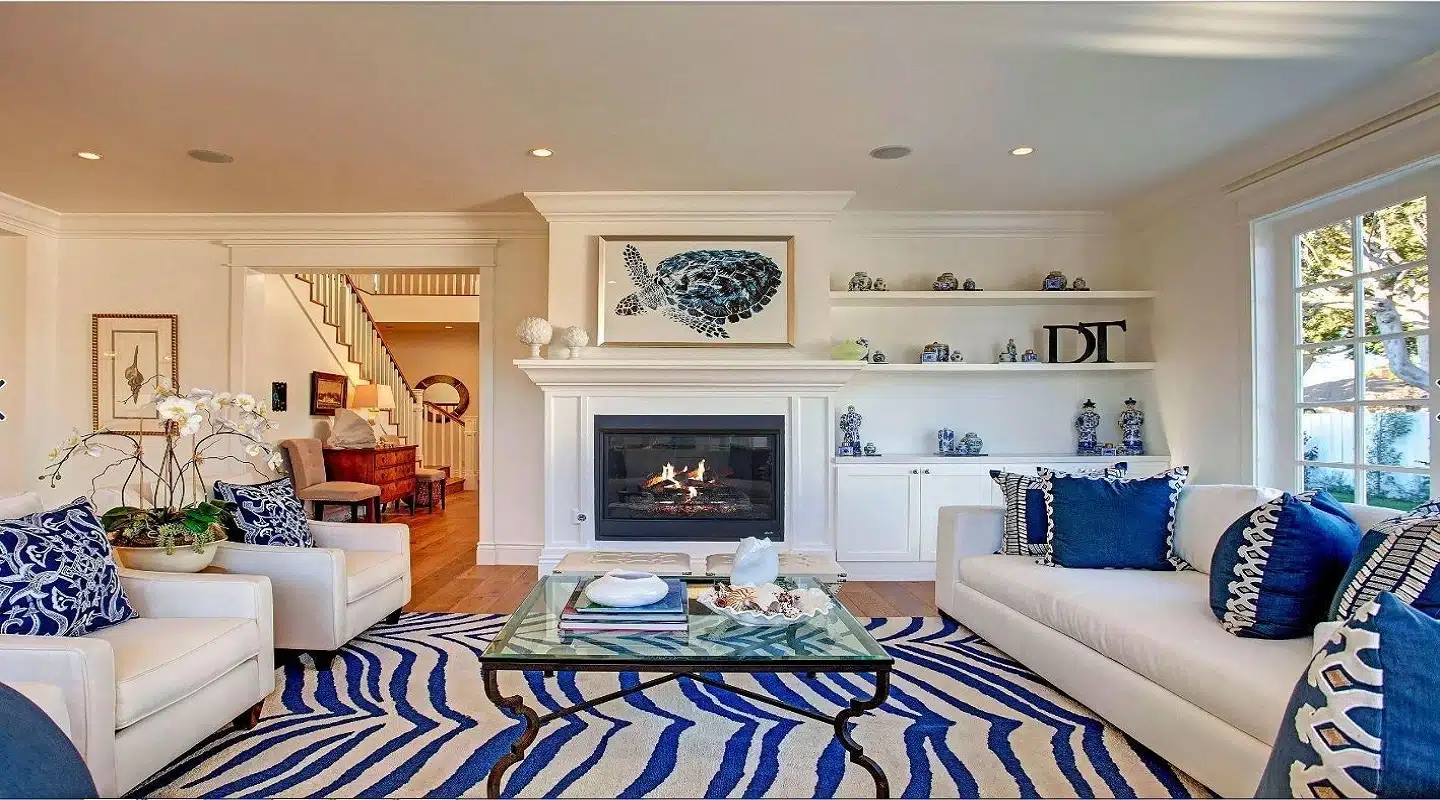
Beyond aesthetics, nautical design can impact our mood and overall well-being due to its robust connection with nature.
Communion with Nature
By integrating elements of the sea, beach, and marine life, nautical design can induce a feeling of being outdoors, which research suggests can enhance mood, mitigate stress, and promote relaxation.
Simplicity and Calm
The emphasis of nautical design on simplicity and clean lines fosters a serene and clutter-free environment, fostering calmness and tranquility, further improving mental well-being.
Nautical Interior Design in Commercial Settings
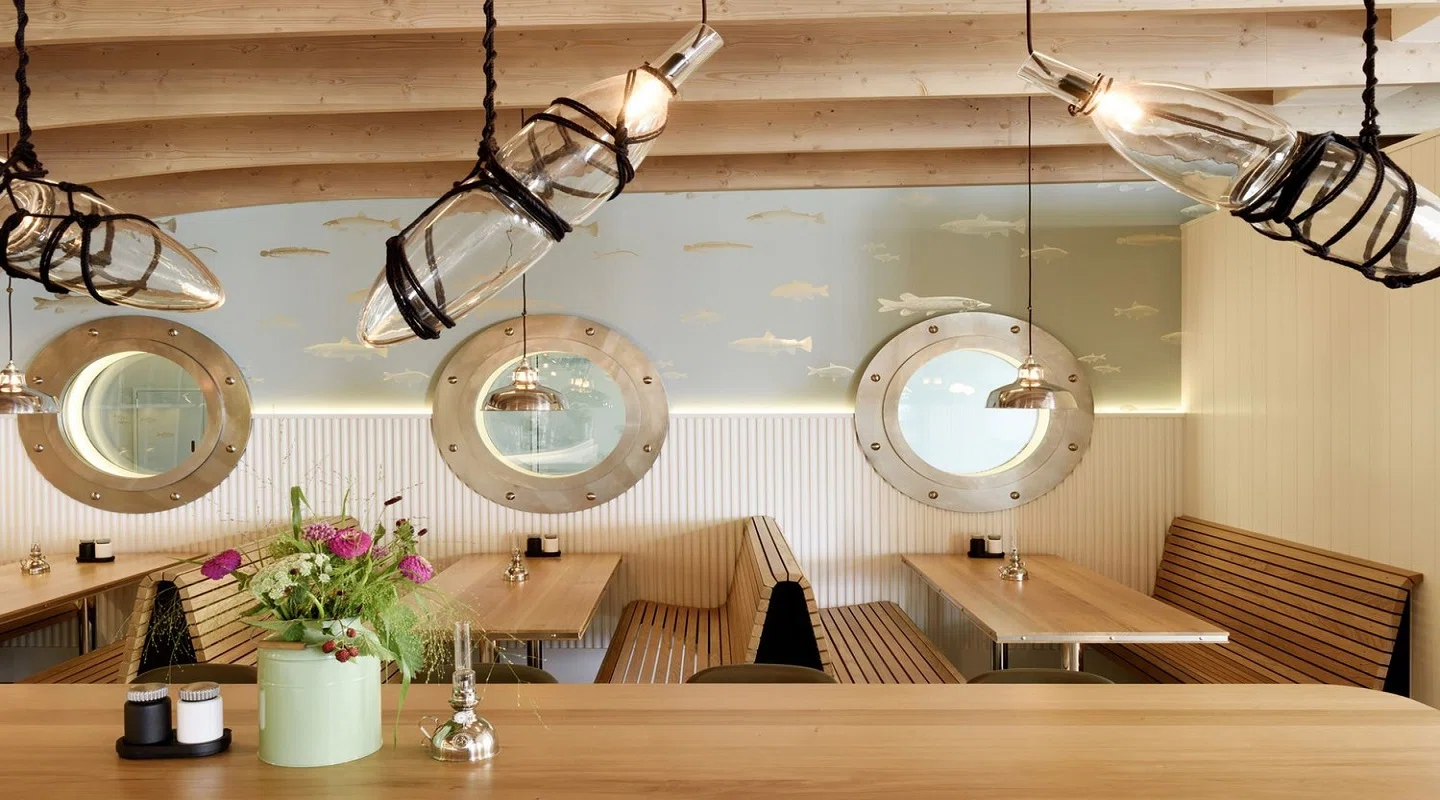
Nautical design isn’t confined to residential spaces. Numerous commercial establishments have also embraced this style to create unique atmospheres.
Dining Establishments
Nautical themes in restaurants and bars can transport customers to the beach, enriching their dining experience. Elements such as ship wheels, rope partitions, and marine artwork can establish a vivid and captivating environment.
Hospitality Industry
Hotels and resorts, especially those near the sea, frequently utilize nautical design to create a unified theme, elevate the vacation experience, and establish a seamless connection with the surrounding environment.
Infusing Your Space with DIY Nautical Projects
Adopting the nautical design doesn’t necessarily demand professional involvement. Here are some DIY ideas to inject maritime charm into your space.
DIY Sea-themed Wall Art
Craft your artwork using found items like seashells, driftwood, or nautical maps. Framed oceanic prints or a gallery wall of beach vacation photos can also have a strong impact.
DIY Nautical Furnishings
Revamp existing furniture with a fresh coat of paint in a sea-inspired shade. Add nautical hardware, such as rope drawer pulls or anchor-shaped knobs, for an extra nautical touch.
DIY Seashell Centerpiece
Fill a glass bowl or hurricane lamp with sand, seashells, and pillar candles for a quick, easy, beach-inspired centerpiece.
Conclusion
Nautical interior design is a tribute to our constant fascination with the ocean. Steeped in historical context, this design aesthetic taps into maritime life’s tranquility and adventurous spirit to create welcoming, comfortable, and visually pleasing interiors. The ongoing evolution of nautical design, underscored by sustainable and digital trends, suggests a future where the enchantment of the sea continues to inspire and shape our interior environments.



Did you find what you were looking for?